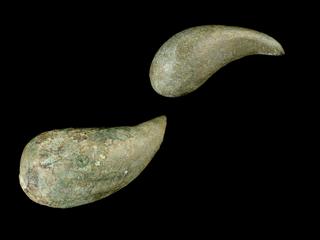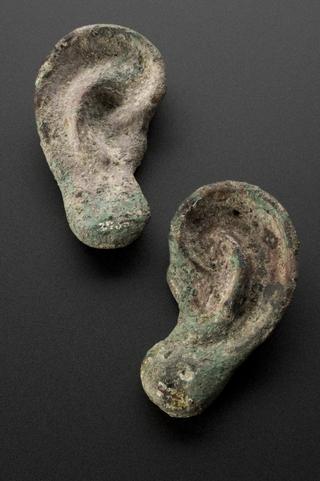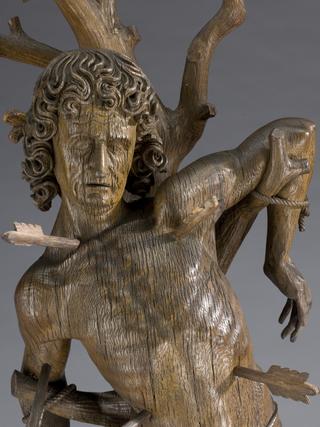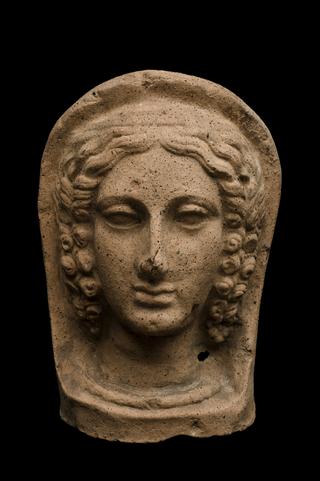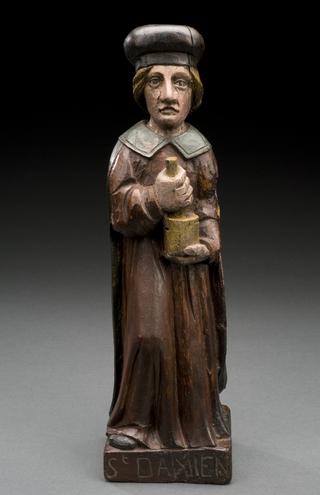
Copy of forceps made from an Egyptian sculpture, Kom-Ombos, Egypt, 1901-1936
- Made:
- 1901-1936; 180 BCE in Egypt




Copy of forceps, perhaps obstetrical, bronze, from sculpture in birth chamber at Kom-Ombos, Egypt
Forceps can be used for a number of applications that involve gripping something large. This example is a bronze replica made from a sculpture found in the birth chamber at Kom-Ombos in Egypt. It is not known what the original forceps were intended for, but they may have assisted women during childbirth.
The unusual double temple at Kom-Ombos was created during the Ptolemaic era about 180 BCE. It contains a very early engraving depicting surgical instruments including forceps such as these. The temple had its own large birth chamber; a feature unique to Ptolemaic temples. The birth house was mostly swept away by the Nile in the 1800s, but some ruins can still be seen.
Details
- Category:
- Classical & Medieval Medicine
- Collection:
- Sir Henry Wellcome's Museum Collection
- Object Number:
- A154146
- Materials:
- metal, white
- Measurements:
-
overall: 315 mm .576kg
jaws fully open: 130 mm,
- type:
- obstetrical forceps and replica
